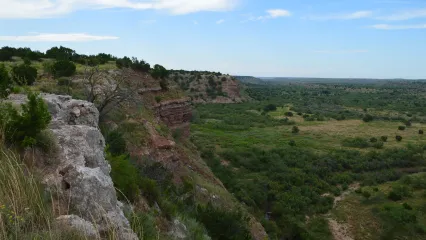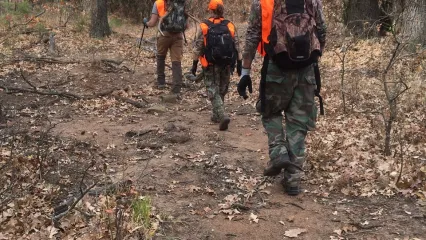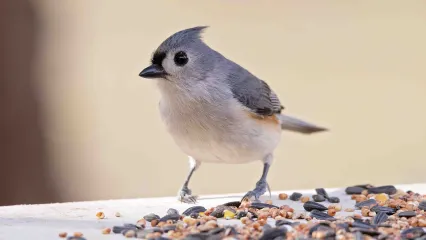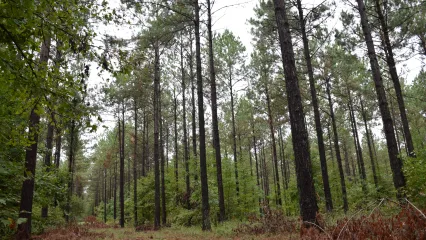Attention Non-Residents
The Oklahoma Wildlife Conservation Commission adopted new rules in 2025 that require non-residents accessing certain Oklahoma public hunting and fishing areas to check in and out of the area. By checking in and out of these areas, hunters, anglers, shooters, birdwatchers, hikers and any other users can help the Wildlife Department better understand how the area is being used. There is no additional cost associated with checking in or out of an area. There is no limit to the number of check ins for an individual in a year.

Contacts
Area Details
Sandy Sanders WMA covers 29,766 acres of Greer and Beckham counties in southwest Oklahoma. The area is located 26 miles northwest of Mangum and 26 miles southwest of Sayre. Sandy Sanders WMA is a unique area consisting of rolling to rugged terrain extending north from the Elm Fork of the Red River.
Mesquite, redberry juniper and mixed grasses dominate the area. The central third of the area contains dense stands of red berry juniper. Extending outward from the center, vegetation makes a transition to mesquite savanna and mixed grass prairie. The Elm Fork River flows year round; however, vegetation is limited to dense salt cedar. Three live creeks flow across the area. Creek bottoms are vegetated with taller, denser grass and scattered trees, including cottonwood, hackberry and American elm. The average annual precipitation for the area is about 21 inches.
East Portion
From Sayre: Interstate 40, 6 miles south on U.S. Hwy 283, 4 miles west on E1270, 7 miles south on N1830, 3 miles west on E1340, 3 miles south on N1800.
West portion
From Erick: 1.5 miles west on U.S. Interstate 40/ U.S. Route 66, 9 miles south on State Hwy 30 to east side entrance or 11 miles south to west side entrance.
Headquarters
From Mangum: 8 miles north on State Hwy 283, 11 miles west on EW1390, 1 miles north on NS1840, 4 miles west on EW1380, 2 miles north on NS1800.
- Quail: Bobwhite quail are usually present in good numbers but are highly sought after. Very few blue quail present.
- Deer: White-tailed deer are present in fair numbers, mule deer in low numbers.
- Turkey: Rio Grande wild turkeys are present in low numbers.
- Rabbit: Both cottontails and jackrabbits are present with cottontails being more common.
- Furbearers: Coyote, bobcat and raccoon are available.
- Dove: Dove are usually present in good numbers during the annual migration.
- Waterfowl: Ducks are usually present in very low numbers on ponds and river.
- Black-tailed Prairie Dog: Present in small numbers.
- Nongame Birds: The area offers a diverse mix of prairie birds and other species found more commonly in wooded areas. Winter bird surveys yield a wide variety of different species.
- Reptiles and Amphibians: Three species of rattlesnake are found on the area as well as many non-venomous species.
Management efforts focus on producing native cover plants and wildlife food plants such as ragweed and sunflower. Summer and winter food plots are planted on the area. Near the headquarters and the Elm Fork River, food plots are planted within trees rows and protected from grazing. Throughout the remainder of the area, plots are either disked to stimulate native plants or are planted to winter wheat. Three windmills and 13 guzzlers have been installed to provide watering facilities for wildlife. The area also has many ponds that are regularly stocked with channel catfish. Some stay full year round while others are seasonal. Cattle grazing is used to increase wildlife food plants and improve habitat conditions.
12 designated primitive camping areas are offered on the area. Both lodging and restaurants are available in Mangum, Sayre and Erick.
Fishing opportunities exist at Doc Hollis Lake, area ponds and creeks. Ponds are stocked with channel catfish and some provide good bass fishing.
Doc Hollis Lake was recently opened to the public as a Department fishing area, but no boats are allowed on the lake.
Doc Hollis lake is particularly vulnerable to golden algae due to its salty water and proximity to lake Altus-Lugert. Golden algae can be spread by water trapped in boat livewells, boat hulls, boat motors and trailers. The Wildlife Department hopes that by prohibiting boats on Doc Hollis Lake they can prevent the lake from being impacted by golden algae.
Closed to all hog hunting.
Closed Seasons
Same As Statewide Seasons
Seasons w/ Special Restrictions
- Deer Muzzleloader
Closed to antlerless mule deer hunting.
- Duck, Merganser and Coot, Sandhill Cranes, Rabbit, Squirrel, Snipe, Woodcock, Pursuit with Hounds for Furbearers, Predator/Furbearer Calling
Closed during the first nine days of deer gun season.
- Quail
Closed during the first nine days of deer gun season. Hunting hours close at 4:30 p.m. daily. Closed to non-resident hunting February 1-15.
- Trapping
Open to water sets, live box traps and enclosed trigger traps only through Jan 31. Open same as statewide Feb 1 through end of February.
- Turkey Fall Archery
One-tom limit.
- Turkey Spring, Youth Turkey Spring
One-tom limit; seasons combined, area combined. Hunting hours close at 7:00 p.m. daily.
Hunter and angler camping is allowed in designated areas. Prairie dog hunting is closed.
Elk City Chamber of Commerce
1-800-280-0207
www.elkcitychamber.com
Erick Chamber of Commerce
PO Box 1232 Erick OK 73645
580-526-3505
erickcityhall@loginonline.net
Great Plains Country
114 South 9th St, Suite A Frederick OK 73542
580-335-5999
gpc@greatplainscountry.com
www.greatplainscountry.com
Oklahoma Tourism and Recreation Department
Post Office Box 52002
Oklahoma City, OK 73152-2002
(800) 652-6552 or (405) 521-2409
www.travelok.com
Sayre
580-928-3156
Apprentice Designation: A Learner's Permit for Hunting
Hunter education has greatly reduced hunting accidents, but if you can’t complete a course right away, the apprentice designation allows you to hunt under supervision. It works like a learner’s permit, giving you the chance to gain real experience safely until you finish hunter education.
Exploring the New Herron Family WMA
The new Herron Family WMA is more than 17,000 acres of hunting land, it is also adventure, access, conservation, and tradition. Thanks to a unique partnership, Oklahoma residents now have a new place to chase deer, call turkeys, hear quail, and pass on the outdoors to the next generation.



